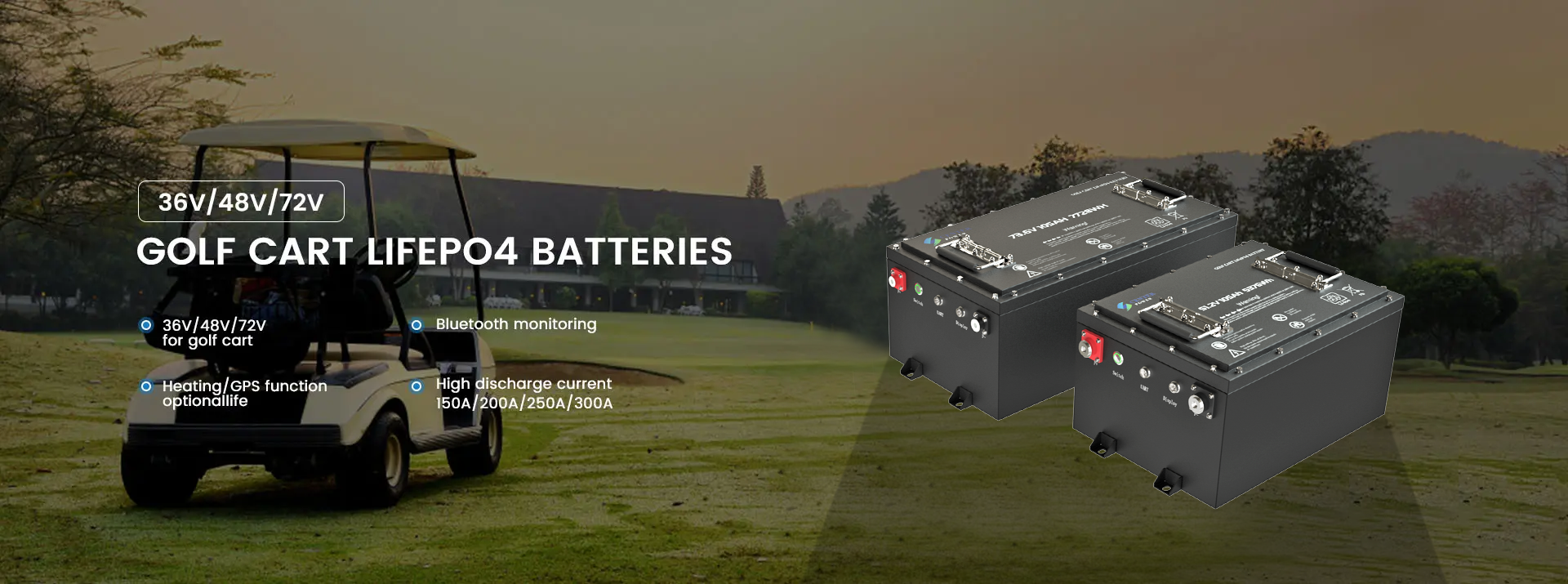
Sure! Here's a more detailed guide on when to recharge a forklift battery, covering different types of batteries and best practices:
1. Ideal Charging Range (20-30%)
- Lead-Acid Batteries: Traditional lead-acid forklift batteries should be recharged when they drop to around 20-30% capacity. This prevents deep discharges that can significantly reduce the battery’s lifespan. Allowing the battery to drain below 20% increases the risk of sulfation, a condition that reduces the battery’s ability to hold a charge over time.
- LiFePO4 Batteries: Lithium iron phosphate (LiFePO4) forklift batteries are more resilient and can handle deeper discharges without damage. However, to maximize their lifespan, it is still recommended to recharge them when they reach 20-30% charge.
2. Avoid Opportunity Charging
- Lead-Acid Batteries: For this type, it's crucial to avoid "opportunity charging," where the battery is partially charged during breaks or downtime. This can lead to overheating, electrolyte imbalance, and gassing, which accelerates wear and shortens the overall life of the battery.
- LiFePO4 Batteries: LiFePO4 batteries are less affected by opportunity charging, but it is still good practice to avoid frequent short charging cycles. Fully charging the battery when it hits the 20-30% range ensures better long-term performance.
3. Charge in a Cool Environment
Temperature plays a significant role in battery performance:
- Lead-Acid Batteries: These batteries generate heat while charging, and charging in a hot environment can increase the risk of overheating and damage. Try to charge in a cool, well-ventilated area.
- LiFePO4 Batteries: Lithium batteries are more heat-tolerant, but for optimal performance and safety, charging in cooler environments is still preferable. Many modern lithium batteries have built-in thermal management systems to mitigate these risks.
4. Complete Full Charging Cycles
- Lead-Acid Batteries: Always allow lead-acid forklift batteries to complete a full charging cycle before using them again. Interrupting the charge cycle can result in "memory effect," where the battery fails to recharge fully in the future.
- LiFePO4 Batteries: These batteries are more flexible and can handle partial charging better. However, completing full charging cycles from 20% to 100% occasionally helps recalibrate the battery management system (BMS) for accurate readings.
5. Avoid Overcharging
Overcharging is a common issue that can damage forklift batteries:
- Lead-Acid Batteries: Overcharging leads to excessive heat and electrolyte loss due to gassing. It’s essential to use chargers with automatic shutoff features or charge management systems to prevent this.
- LiFePO4 Batteries: These batteries are equipped with battery management systems (BMS) that prevent overcharging, but it’s still recommended to use a charger specifically designed for LiFePO4 chemistry to ensure safe charging.
6. Scheduled Battery Maintenance
Proper maintenance routines can extend the time between charges and improve battery longevity:
- For Lead-Acid Batteries: Check electrolyte levels regularly and top off with distilled water when necessary. Equalize the charge occasionally (usually once a week) to balance the cells and prevent sulfation.
- For LiFePO4 Batteries: These are maintenance-free compared to lead-acid batteries, but it’s still a good idea to monitor the health of the BMS and clean terminals to ensure good connections.
7. Allow Cooling After Charging
- Lead-Acid Batteries: After charging, give the battery time to cool down before use. Heat generated during charging can reduce battery performance and lifespan if the battery is immediately put back into operation.
- LiFePO4 Batteries: Although these batteries don’t generate as much heat during charging, allowing them to cool down is still beneficial to ensure long-term durability.
8. Charging Frequency Based on Usage
- Heavy Duty Operations: For forklifts in constant use, you may need to charge the battery daily or at the end of each shift. Make sure to adhere to the 20-30% rule.
- Light to Moderate Use: If your forklift is used less frequently, charging cycles may be spaced out to every couple of days, as long as you avoid deep discharges.
9. Benefits of Proper Charging Practices
- Longer Battery Life: Following proper charging guidelines ensures that both lead-acid and LiFePO4 batteries last longer and perform optimally throughout their life cycle.
- Reduced Maintenance Costs: Properly charged and maintained batteries require fewer repairs and less frequent replacements, saving on operational costs.
- Higher Productivity: By ensuring your forklift has a reliable battery that charges fully, you reduce the risk of unexpected downtime, boosting overall productivity.
In conclusion, recharging your forklift battery at the right time—usually when it hits 20-30% charge—while avoiding practices like opportunity charging, helps maintain its longevity and efficiency. Whether you're using a traditional lead-acid battery or the more advanced LiFePO4, adhering to best practices will maximize battery performance and minimize operational disruptions.
Post time: Oct-15-2024






